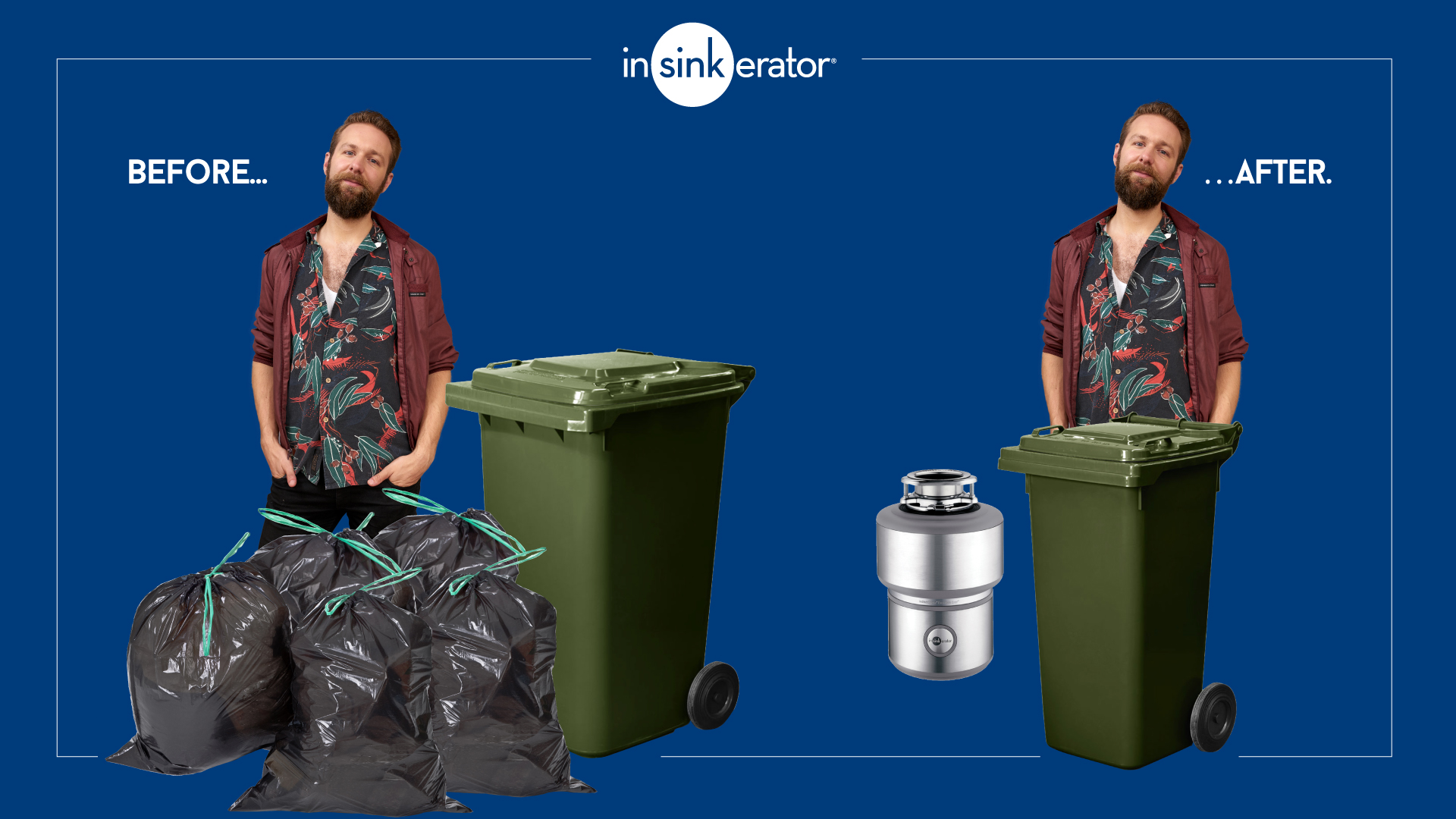Here we would like to answer a few popular questions;
- What can you put in an Insinkerator?
Insinkerators take all small bones, meat, dairy, all food waste scraps-take bones, meat, seafood, dairy, tea bags, coffee grounds, egg shells, fruit and veg and much more. They are ground into tiny particles and flushed through your plumbing into the sewerage which go to wastewater treatment plants. At appropriate wastewater treatment plants, Methane is captured and turned into renewable energy and at appropriate plants the sludge can be turned into biosolids. They use less than 1% of the households water consumption and cost under $3.50 a year to run in electricity.
- What is an Insinkerator?
A food waste disposer unit installed under a kitchen sink. The Insinkerator was invented to help the consumer dispose of food waste, whilst providing convenience and keeping the kitchen environment hygienic. The Insinkerator garbage disposal unit was invented in 1927 by John W. Hammes, an architect, he created the company Insinkerator and put his disposer on the market in 1938. Headquartered in Racine, Wisconsin, InSinkErator® is the world’s largest manufacturer of food waste disposers Food Waste Disposers or Garbage Disposals and instant hot water dispensers for home and commercial use. Insinkerator offers a simple, cleaner alternative to the conventional methods of food waste disposal.
With more than 80 years of history, Insinkerators provide a tried and tested solution, proven across many geographies.. The technology, durability, efficiency and reliability of the solution and customer service remains unmatched in the industry today.
- What is the best Insinkerator?
There is an Insinkerator for every household, it depends upon the experience you want, the lifestyle you lead, budget and size of household.
Insinkerator is not only the largest manufacturer of food waste disposers, but Insinkerator also celebrates over 80 years of history, innovation for the sink that has saved over 80 million tonnes of food to landfill.
Disposal technology has advanced dramatically since 1938, culminating with the high-end performance of the Evolution Series®, which features advanced sound-reduction with insulation, grind, anti-jam and anti-vibration technologies.
- How much does it cost to install an Insinkerator?
It is a case by case basis, the process is straightforward and it is recommended that you use a licenced plumber to install an Insinkerator food waste disposer unit
- Do you need a plumber to install a garbage disposal?
We recommend getting a licenced plumber to help install your Insinkerator.
- Does garbage disposal need to be emptied?
No, the Insinkerator crushes the food waste into tiny particles which are flushed down into the sewerage. This then goes to the wastewater treatment plant to be treated and recycled.
Here is our video on the process of food waste
- Can you put meat in a garbage disposal?
Yes, all forms of meat, fish, dairy, egg shells, veg and pasta. Rather, slowly put scraps into the disposal and allow it to grind the waste completely before turning it off. That helps it break waste into smaller particles, which are more easily handled by waste treatment systems. Always use cold water and make sure to let the water run for several seconds after grinding is done to flush waste. Never pour oils or grease down the disposer, which could cause clogs in pipes and sewer lines.
Join the war on food waste and stop your food scraps going to landfill. Find out more see one of our retailers or call our hotline to find out more 1300 136 205 or email [email protected]
Join the war on food waste and stop your food scraps going to landfill. Find out more see one of our retailers or call our hotline to find out more 1300 136 205 or email [email protected]






